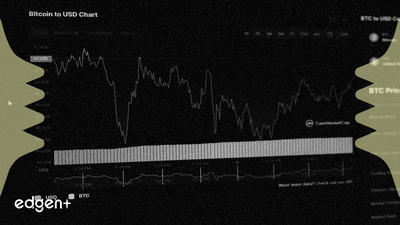Related News

U.S. Government Reopening Paves Way for Delayed September Jobs Report, Stirring Market Anticipation
## Executive Summary The conclusion of the 43-day U.S. government shutdown has initiated the release of delayed economic statistics, with the September jobs report now officially scheduled for Thursday, November 20. This release is a pivotal event for financial markets, which have been operating in a data vacuum. The report from the **Bureau of Labor Statistics (BLS)** is expected to provide the first clear measure of the labor market's condition and heavily influence the **Federal Reserve's** near-term monetary policy decisions. ## The Event in Detail The U.S. government's reopening has allowed federal agencies to begin clearing a significant backlog of economic reports. The most anticipated of these is the September nonfarm payrolls report, which the **BLS** confirmed will be released at 8:30 AM ET on November 20. The shutdown, which spanned all of October and the beginning of November, not only delayed the September data but also prevented the collection of data for October. As a result, officials have noted that the October household survey, a key component for estimating the unemployment rate, was not conducted. This has led to concerns about the integrity of the upcoming economic reports. ## Market Implications For the past six weeks, markets and policymakers have been described as "flying blind." The **Federal Reserve**, which predicates its policy on being "data-dependent," has been effectively "data-starved." The release of the September jobs data is therefore critical. A strong report could signal underlying economic resilience, potentially giving the **Fed** justification to maintain a hawkish stance on interest rates. Conversely, a weak report could amplify fears of an economic slowdown, placing pressure on the central bank to consider more accommodative policies. Analysts anticipate heightened market volatility as investors recalibrate their expectations based on this first piece of hard data. ## Expert Commentary Market participants have expressed concerns over the quality of the backlogged data. One analyst noted the potential for permanent impairment of the information, stating, "All of that economic data released will be permanently impaired, leaving our policymakers at the Fed flying blind at a critical period." BMO Capital Markets analysts have expressed that while there is "relief in sight" with the return of data, significant "risks remain" regarding its interpretation and completeness. National Economic Council Director Kevin Hassett highlighted the data gap, stating, "we’re going to get half the employment report" due to the unconducted October household survey. ## Broader Context The data drought occurred at a time when the U.S. economy was already navigating headwinds, including trade tariff uncertainty and the economic impact of artificial intelligence adoption. The absence of reliable government statistics has magnified this uncertainty for investors and corporate decision-makers. Furthermore, the shutdown's impact will have lasting consequences, as certain reports, such as the October inflation data, will not be produced at all because the underlying data could not be collected. This creates a permanent gap in the nation's economic record, complicating long-term trend analysis.

Nordea Bank Abp Stock Performance and Financial Fundamentals Reviewed
## Market Performance and Key Financial Indicators **Nordea Bank Abp** (NDA FI) has demonstrated notable market performance, with its share price advancing by **41.7%** year-to-date and **52.9%** over the past year. This considerable appreciation prompts a comprehensive review of the bank's underlying financial health and future prospects. In the third quarter of 2025, Nordea reported a strong **return on equity (ROE)** of **15.8%**, surpassing its financial outlook of above 15% for the year. This performance was achieved despite a challenging environment marked by geopolitical tensions and policy rate reductions, which led to a **6% decline in net interest income**. However, this was offset by a **5% increase in net fee and commission income** and a **10% growth in net insurance results**. ### Detailed Operational Performance Nordea's resilience is further highlighted by its robust lending growth, with **mortgage lending rising 6% year-on-year** and **corporate lending also expanding by 6%**. These increases were driven by organic growth in Sweden and strategic acquisitions in Norway, alongside Nordic companies adjusting to the prevailing operating environment. **Assets under management (AuM)** increased by **11% to EUR 456 billion**, with strong Nordic net flows contributing **EUR 4.4 billion** during the quarter. The bank's capital position remains strong, evidenced by a **Common Equity Tier 1 (CET1) ratio of 15.9%**, significantly above regulatory requirements. This robust capital base has enabled the launch of a new **EUR 250 million share buy-back program**, expected to complete before year-end 2025, following a broader EUR 6 billion initiative since 2021. ### Valuation Perspectives and Market Reaction The market's positive reaction to Nordea's performance aligns with its solid financial results and proactive capital management. However, valuation metrics present a nuanced picture. An **Excess Returns model** suggests that Nordea's stock is undervalued by **40.3%**. This model assesses the return an investment achieves above a designated benchmark, indicating that Nordea is generating returns significantly beyond market expectations given its risk profile. Conversely, a review of the bank's **Price-to-Earnings (P/E) ratio** indicates it is slightly overvalued compared to its historical "Fair Ratio." The P/E ratio, which compares a company's share price to its earnings per share, serves as a common metric for assessing whether a stock is overvalued or undervalued. For Nordea, the latest reported earnings per share for Q3 2025 was **EUR 0.36**. Consensus among investors often considers a P/E ratio between 10 and 20 as "fairly valued," though this is sector-dependent. ### Broader Context and Future Implications Nordea's strategic emphasis on the Nordic region aligns with broader regional growth expectations. For instance, **Telenor** (TEL), another prominent Nordic entity, anticipates low-to-mid single-digit organic core earnings growth in the Nordic region until 2030, underscoring the potential for sustained economic activity in the area. Nordea's **cost-to-income ratio**, at **46.1%**, reflects ongoing investments in digital and data capabilities aimed at supporting margin resilience. While the bank's net profit margin has seen a slight decline from 43.1% to 41.3%, its five-year annual earnings growth averaged 15.6%. However, recent analyst consensus projects a slight decline in earnings by **-0.03% per year** over the next three years, with revenue growth estimated at a modest **2.2% annually**, a slower pace than the Finnish market average. > "Consensus forecasts for slow revenue growth and a gradual decline in margins temper any high-conviction buy case, implying the market expects Nordea's profitability to remain flat rather than rebound," one analysis stated. Despite these projections, Nordea's robust capital structure, as demonstrated by stress tests, indicates its ability to absorb economic shocks. Even under severe stress scenarios, the bank's CET1 capital ratio is projected to remain above regulatory minimums, providing a substantial buffer. The ongoing share buy-back program further signifies management's confidence and commitment to enhancing shareholder value. Investors will closely monitor Nordea's ability to maintain its strong return on equity, manage net interest income in a fluctuating interest rate environment, and leverage its Nordic expansion strategy to counter pressures on future earnings growth. The completion of the current share buy-back program and future capital allocation decisions will also be key focus areas.

Snail Inc. (SNAL) Reports Q3 2025 Revenue Decline Amid Strategic Investments and Deferred Revenue Build-Up
## Financial Performance Overview **Snail Inc.** (NASDAQ: **SNAL**) reported its financial results for the third quarter of 2025, revealing a decline in net revenue and a shift from net income to a net loss compared to the previous year. The company's net revenue for the quarter stood at **$13.8 million**, a decrease from **$22.5 million** in the same period last year. Concurrently, Snail Inc. recorded a net loss of **$7.9 million**, a notable reversal from the net income of **$0.2 million** reported in Q3 2024. This performance was primarily influenced by increased operational expenses and the timing of revenue recognition. ## Key Operational Highlights and Revenue Drivers Despite the net revenue reduction, **Snail Inc.** demonstrated underlying strength in its bookings, which rose by **9.3%** year-over-year to **$17.6 million**. This growth was largely attributed to the continued robust performance of its **ARK franchise** and other new releases. The company's CFO, Heidy Kingwan Chow, clarified that the third quarter's net revenue decline was "primarily driven by the timing of revenue recognition rather than a fundamental change in our business or a reduction in the sales and demand for our products." This statement highlights the significant balance of deferred revenue that is yet to be recognized. By September 30, **Snail Inc.** held a deferred revenue balance of **$36.4 million**, with **$35.3 million** being nonrefundable. A substantial portion of this, **$26.5 million**, is anticipated to be recognized over the next twelve months. Specifically, **$5.8 million** of this deferred revenue is expected to be recognized in Q4 2025, largely driven by the upcoming launch of the **ARK: Lost Colony** DLC. The company also noted a **38.7%** increase in total units sold over a nine-month period, with its **ARK mobile** title surpassing **9 million downloads**. ## Strategic Investments and Market Positioning **Snail Inc.** is actively pursuing strategic growth avenues, most notably through its proprietary **stablecoin project**. This initiative aims to position the company as a pioneering entity in the integration of digital payments within the gaming industry. The broader stablecoin market experienced significant growth in 2025, with processed payments reaching **$9 trillion**, an **87%** increase from the prior year. The market capitalization hit **$312 billion** in October 2025, with **Circle's USDC** jumping **72%** to **$74 billion** and **Tether** (USDT) seeing **32%** growth, fueled by regulatory clarity and institutional adoption. Companies like **JPMorgan** and **PayPal** have also expanded their stablecoin offerings, indicating a growing acceptance and utility of these digital assets. **Snail Inc.'s** foray into this space suggests a forward-looking strategy to capitalize on the evolving digital economy. ## Outlook and Upcoming Releases Management expressed optimism for year-end results, underpinned by strong presales and ongoing engagement across the **ARK franchise**. The upcoming launch of the **ARK: Lost Colony** DLC in December 2025 is projected to be a primary growth driver, contributing significantly to Q4's top-line results. Presales for the **Lost Colony Expansion Pass** have already exceeded expectations, reaching approximately **306,000 units** by September 30. Additionally, the company is set to launch **Echoes of Elysium** in December 2025, further diversifying its game portfolio. The recognition of **$26.5 million** in deferred revenue over the next year is expected to bolster financial performance and reflect the underlying demand for **Snail Inc.'s** intellectual properties. The company's continued investment in its stablecoin infrastructure and expanding game offerings signals a strategic focus on long-term value creation.
